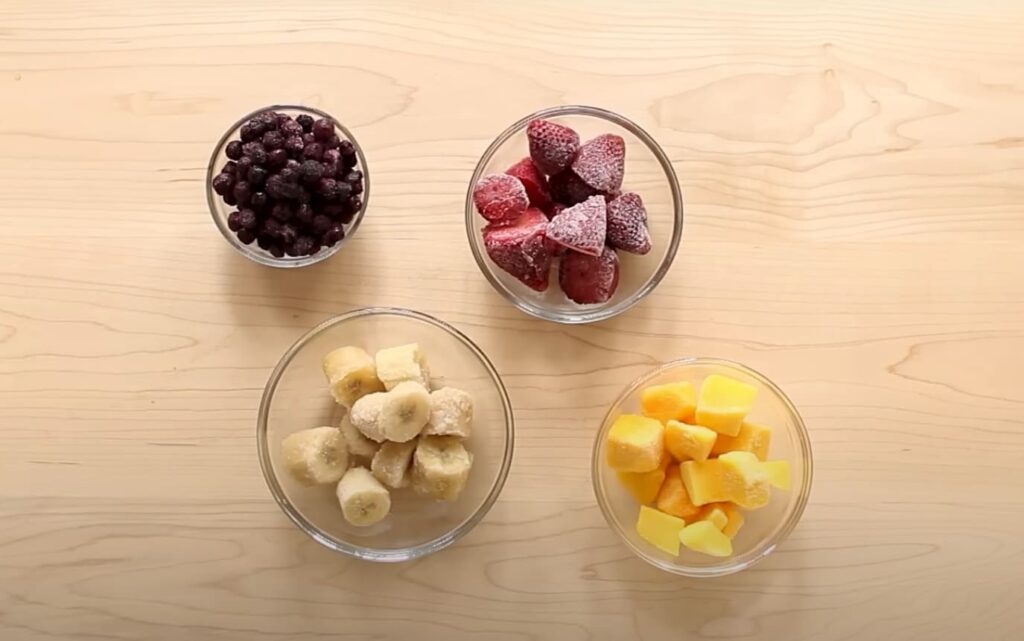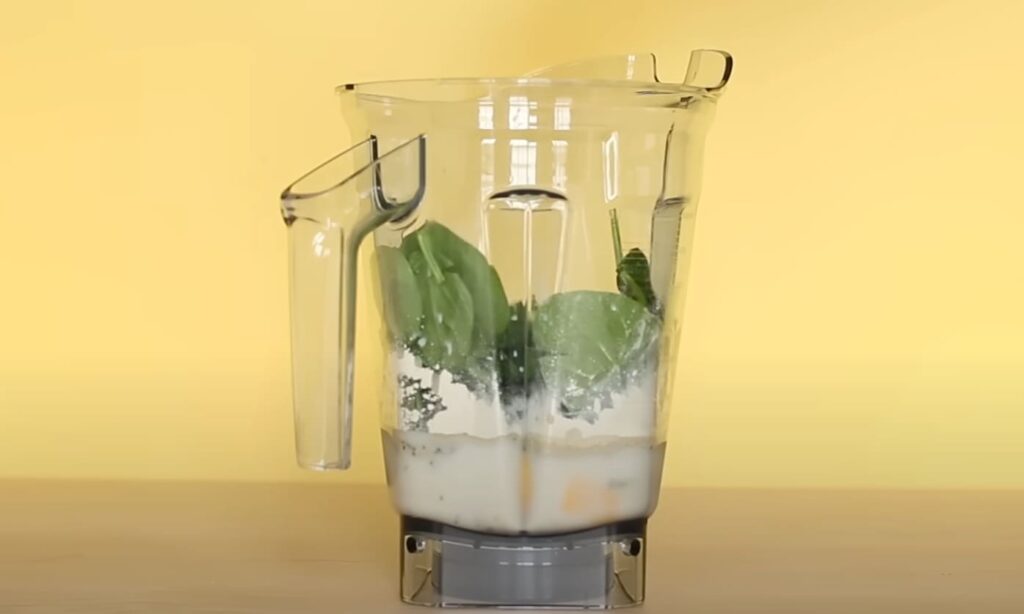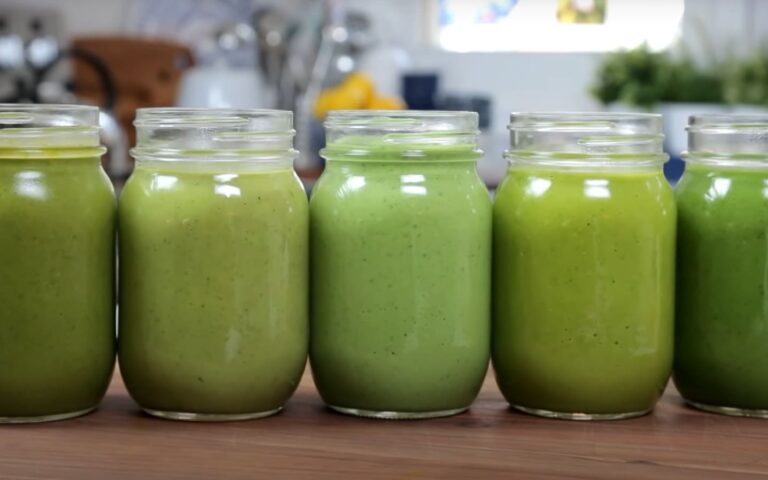What Should You Not Mix in a Smoothie?
Smoothies are supposed to be healthy. A nutritious blend of fruits, veggies, and protein. But not all ingredients are created equal when it comes to smoothie-making. While fruits and leafy greens are smoothie staples, some ingredients should stay far away from your blender. If you want to create a refreshing, delicious smoothie without any unpleasant surprises, it’s important to know what to avoid mixing in. Some ingredients can ruin your smoothie’s texture, taste, or nutrition. We will talk about what you should think twice before tossing into your blender if you want your smoothie to succeed.
In a Nutshell
When making a smoothie, it’s important to be mindful of ingredients that blend poorly or make the texture unappealing. Avoid chunks of raw meat, poultry, or fish; these can be unsafe and create a gritty, messy texture. Steer clear of whole nuts or seeds, which can be hard to break down fully. Leafy greens like kale and spinach are great, but avoid tough greens like broccoli or cauliflower florets. Whole fruits with pits and skins can be tough on your blender, so stick to peeled and seeded fruits. Otherwise, get creative with your flavor combos! Just keep the ingredients relatively uniform in texture. Smoothies should be refreshing and easy to drink down.

What to avoid when making a smoothie
Smoothies are a delicious and nutritious way to increase your fruit and vegetable intake. However, certain ingredients should be avoided or limited when making smoothies. Knowing what to leave out of your smoothie will prevent digestive issues and create a palatable and healthy drink.
Avoid Adding Too Much Fruit
Fruit is often the main component of smoothies. However, too much fruit can spike your blood sugar levels. Limiting your smoothie to 1-2 servings of fruit, which is about 1-2 cups, is best. Choose lower glycemic options like berries rather than tropical fruits like mango or pineapple, which have more natural sugar. Adding veggies balances out the sugar content.
Don’t Mix Citrus Fruits and Dairy
Dairy products like milk, yogurt, and kefir are commonly added to smoothies for a protein and calcium boost. However, citrus fruits like oranges, lemons, and limes should not be blended with dairy. The citric acid can curdle dairy and give your smoothie a clumpy, cottage cheese-like texture. For a creamy, non-curdled smoothie, avoid this combination.
Limit Green Leafy Veggies
Leafy greens like kale and spinach provide nutrients like vitamins A and K. But use them sparingly in smoothies. These veggies contain oxalic acid, which binds to calcium and can make it unavailable for absorption. Too much oxalic acid can lead to kidney stones in sensitive individuals. Keep leafy greens to about one packed cup per smoothie.
Don’t Add Too Many Nut Butters
Peanut, almond, and other nut butter make smoothies more filling. But limit your addition to 2 tablespoons per smoothie. Nut butters are high in healthy fats, which are difficult to blend fully. This can leave a greasy mouthfeel. Too much fat also makes smoothies taste imbalanced.
Avoid Using Protein Powder as the Only Protein Source
Many people add protein powder to smoothies as a protein boost. But protein powder should only partially replace whole food sources of protein like Greek yogurt and cottage cheese. Over-relying on protein powder can lead to excess sodium, artificial sweeteners, and preservatives. For a healthier smoothie, include both whole foods and a scoop of protein powder.
Don’t Use Fruit Juice as the Liquid Base
The liquid base of your smoothie is crucial for getting the right consistency. Fruit juice should not be your only liquid. Though juices provide flavor, they’re high in sugar without the fiber of whole fruits. Replace some juice with nut milk, kefir, or Greek yogurt for more protein and nutrients.
Steer Clear of Frozen Produce with Added Sugar
Read the packaging carefully when purchasing frozen fruits and veggies for smoothies. Many brands add sugar to their frozen produce, which adds unnecessary calories. Try to buy plain, unsweetened varieties or use fresh/frozen produce without added sugars.
Don’t Add Ice Cream or Other Sugary Treats
Creating a “treat” smoothie can be tempting by adding ice cream, chocolate sauce, or other sweet goodies. However, this significantly spikes the sugar and calorie count. Leave out the sugary mix-ins and instead add natural flavors using spices like cinnamon, vanilla, or cocoa powder.
With a good Blender and proper ingredient choices, you can whip up a nutritious smoothie free of clumps, curdling, or excess sugar. By avoiding too much fruit, leafy greens, nut butter, and fruit juice, your smoothie will provide a balance of protein, fiber, and nutrients. Pay close attention to added sugars in frozen produce and avoid the temptation to turn your smoothie into a milkshake. Follow these tips for refreshing, satisfying smoothies anytime.

Tips for making a healthy and delicious smoothie
Smoothies make it easy to pack a lot of nutrition into one drink. With the right blend of ingredients, you can create a smoothie that tastes great and provides a boost of vitamins, minerals, and fiber. Follow these tips to make flavorful, wholesome, and satisfying smoothies.
Use a Variety of Fruits and Veggies
For balanced nutrition, include a mix of different fruits and vegetables in your smoothie. Fruits like berries, banana, mango, and pineapple add sweetness, while veggies like spinach, kale, and Swiss chard pack nutrients and antioxidants. Aim for 2-3 types of produce in each smoothie.
Rotate Greens
Leafy greens are powerhouses of vitamins A, C, and K. But for taste and health reasons, don’t use the same greens every day. Rotate between spinach, kale, swiss chard, romaine, and other greens. This prevents the spinach flavor from getting boring and limits oxalates, which can block nutrient absorption when consumed too frequently.
Include Protein and Healthy Fats
In addition to fruits and veggies, include ingredients with protein, healthy fats, and fiber like Greek yogurt, nut butter, chia seeds, and avocado. These help balance your energy and keep you full. Greek yogurt adds calcium, nut butter provides vitamin E, and chia seeds are loaded with omega-3s.
Choose Nutrient-Rich Boosters
Take your smoothie to the next level nutrition-wise by blending in “superfoods” like wheatgrass, spirulina, maca powder, and bee pollen. Add just 1 tsp of these nutritionally concentrated boosters to get antioxidants, amino acids, and enzymes. Their strong flavors mean a little goes a long way.

Use Milk to Adjust Creaminess
The liquid ingredients influence the texture of your smoothie. Use milk to make your smoothie creamier if desired. Dairy, soy, almond, and coconut milk blend easily and provide moisture for a smooth, silky mouthfeel. For a thinner smoothie, use water or juice instead.
Balance Strong Flavors
Some smoothie ingredients like spinach, matcha powder, and peanut butter have robust, dominant flavors. Counteract strong flavors by blending them with milder fruits like pineapple, pear, and banana, which have a light natural sweetness. This prevents any single flavor from overpowering the others.
Don’t Overdo the Sweetness
While fruits add natural sugars, resist adding extra sweeteners like honey, maple syrup, or sugar. Limit high-glycemic fruits like mango and banana as well. Too much total sugar can lead to energy crashes. If you desire some sweetness, try dates, vanilla extract, or a pinch of cinnamon instead.
Play with Texture Contrasts
Smoothies tend to have uniform, liquified textures. Liven things up by adding mix-ins that provide contrasting crunch or creaminess. Toppings like chopped nuts, seeds, shredded coconut, and fresh berries add a pleasing texture. You can also swirl in nut butter or yogurt for thickness.
It’s easy to whip up flavorful, nutrient-packed smoothies by using diverse fruits and veggies, plant-based proteins, and healthy fats. Balance strong flavors, watch your sugar intake, and play with textures. With the right mix of ingredients, you can create healthy and delicious smoothies.

FAQ
What are some ingredients I should avoid putting in my smoothies?
Certain ingredients need to blend better in smoothies or make them unpalatable. Whole nuts, seeds, and fibrous vegetables like broccoli, cauliflower, and celery can be difficult for blenders to break down fully and leave chunks in your smoothie. Raw meats, fish, eggs, and dairy products like yogurt and soft cheese can harbor dangerous bacteria when blended raw. Tough greens like kale and spinach are fine but avoid thick stalks. Fruits with pits, skins, and rinds don’t blend smoothly. Greasy, creamy, or oily ingredients like nut butter, avocado, coconut, and olive oil can lead to separation. Ice cream has a granular texture when blended.
Why should I avoid blending nuts and seeds in my smoothies?
Whole nuts and seeds contain oils that can cause separation in blended drinks. Their small size and hard shells also make it challenging for blenders to break down fully. This leaves gritty pieces in your smoothie that make it unpleasant to drink. Use nut and seed butter instead of whole nuts and seeds for a smoother texture. You can also grind nuts and seeds into flour before adding them. Soaking nuts and seeds can help soften them too.
What fruits should I avoid putting in smoothies?
Fruits with tough skins, rinds, cores, and pits don’t blend well in smoothies. Their skins can give an unpleasant texture. Blend pineapple cubes instead of chunks and remove mango pits. Berries like strawberries and raspberries blend smoothly. Citrus fruits like oranges, grapefruit, and lemons make smoothies bitter. Melons like cantaloupe and honeydew have high water content, making smoothies runny. Avoid fruits like papaya, guava, and bananas when ripe, as they have a mushy texture.
Why is it unsafe to blend raw meat and fish in smoothies?
Raw meat, poultry, fish, and eggs can contain harmful bacteria like salmonella and E. coli. Blending them doesn’t kill the bacteria. Consuming raw, blended meat or eggs can cause food poisoning. Even when blended into smoothies, bacteria can still be present. Cook meat thoroughly before blending for food safety. Eggs should be pasteurized or cooked before blending as well.
Should I avoid leafy greens in my smoothies?
Leafy greens like kale, spinach, and chard add great nutrients to smoothies. But thick stalks and stems don’t blend well, so remove them first. Collard and beet greens, broccoli, cabbage, and bok choy can also be fibrous. Start with just a handful of greens in your smoothies until you find the right balance of texture. Avoid mature greens with bitter flavors. Baby greens and herbs give great flavor without texture issues.
What dairy products should I not blend in a smoothie?
Full-fat Greek yogurt and soft silken tofu blend smoothly into creamy smoothies. Avoid blending chunks of hard cheese which doesn’t fully incorporate. Cottage cheese and ricotta cheese can curdle when blended. Ice cream has a gritty texture when blended. Skip milk when possible, as it dilutes smoothies. If using, stick to nut milk and avoid dairy milk, which can curdle with fruit acids.
How can I avoid gritty, separated smoothies?
Use ripe, soft fruits and vegetables. Cut into small, uniform pieces before blending. Avoid fruits with peels, seeds, stems, and greens with thick ribs. Skip fibrous veggies like celery. Don’t overfill the blender, which strains the motor, leaving chunks. Don’t blend at too high a speed, incorporating air bubbles. Add liquid ingredients like juice, almond milk, or coconut water for a smoother blend. Start with softer ingredients before adding leafy greens or ice. Blend in stages if needed to puree evenly.
Related Video: 10 Common Smoothie Mistakes | What NOT to do!
Final Thoughts
While smoothies are an amazing way to pack nutrients into a delicious, portable meal or snack, not all ingredients blend well. Certain foods can make smoothies gritty, slimy, or even unsafe to consume. You can create smoothies with an appetizing texture by avoiding raw meats, fish, eggs, whole nuts and seeds, tough veggies, and fruits with pits and peels. Focus on fruits and veggies that blend down smoothly, add some liquid, include soft herbs or greens, and throw in a protein source like yogurt or nut butter. With the right combo of ingredients, you can whip up a smoothie that’s nutritious, tasty, and easy to enjoy!







